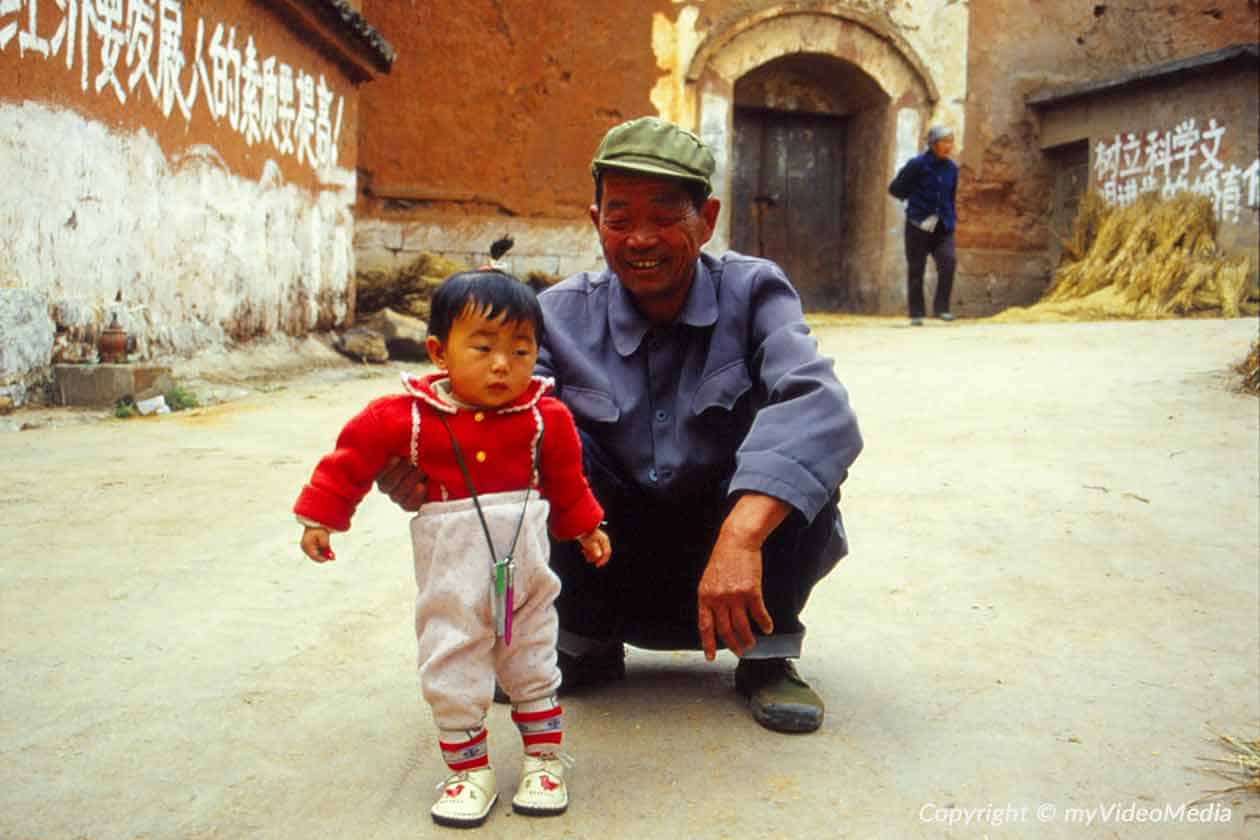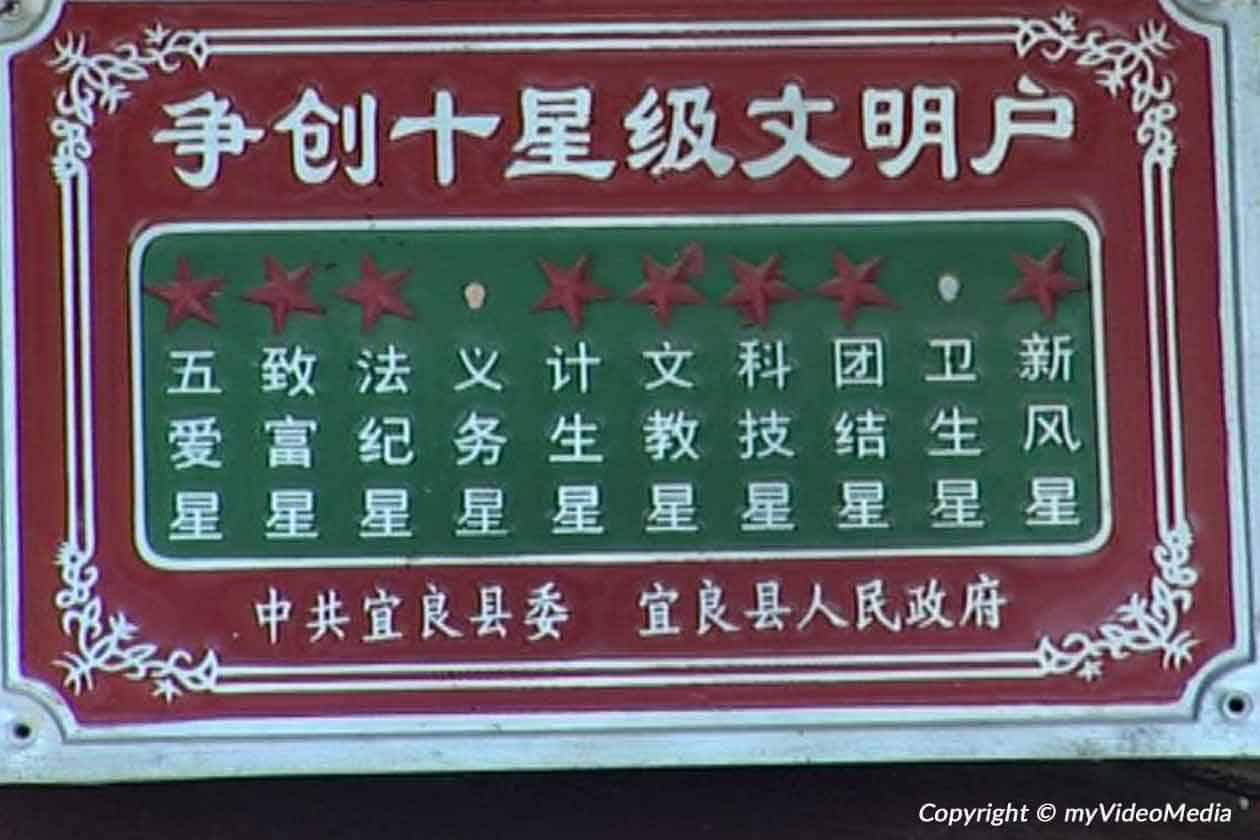On the way to the stone forest, Kunming’s most famous natural spectacle, we have the opportunity to see a bit of the country life in Yunnan.
In 2004, the agricultural machines were still very modestly equipped, and manual work in the fields was a standard.

On the way, we meet a narrow-gauge railway, which leads from Hải Phòng in Vietnam to Kunming. At the beginning of the 20th century, it was built by the French to export mineral riches from Yunnan province.

However, the course of the route with its gradients only allowed short trains, so that in the past mainly smuggled goods and drugs were initially transported. Nevertheless, the railway was an essential building block in connecting Yunnan with Indochina. At least 12000 of 60000 workers died during the construction of the railway line. On the occasion of the centenary, France paid the entire renovation costs of the railroad track.
We reach Yiliang, a suburb of Kunming, about 1700 to 1800 m above sea level. The region is known as the granary of Yunnan. Twice a year, one harvests wheat and rapes and additionally potatoes in winter, and rice and soy in summer.

The specialty of the province is the roasted Yiliang-duck, produced here since the Qing Dynasty.
Please watch the video
You are currently viewing a placeholder content from YouTube. To access the actual content, click the button below. Please note that doing so will share data with third-party providers.
More InformationThe cooking method is similar to the Peking duck, crispy on the outside and tender on the inside. However, one uses only the local breed of duck. Roasted over pine branches and needles, the duck gets its extraordinary taste.

If you drive from Kunming to the stone forest, you can find the Yiliang duck at one of the many street restaurants. We can recommend to taste it.
When we visit a typical village of the Yi minority, after initial distrust, the people proudly present their children to us.

In 2004, one already anticipated the current system of total surveillance through the social score. Each house had a sign with a row of a maximum of 10 stars above the entrance.

The stars publicly indicate the evaluation of a family behaves: Good relations with neighbors, mastered family planning, obeyed laws, wealth through work. But there are also negative sides: lack of cleanliness, no military service. In the modernity section, there is one star missing, which means that the family is very traditional.
Today, there are an estimated 400 million surveillance cameras in China, many with facial recognition software. The seamless monitoring of many citizens using GPS and individual OCR codes can be an advantage in the age of the corona virus.
